Agriculture
Archive of the Podcast Series “The Science Behind Your Salad”
The Future of Food

# 28
Food is also what connects farming to human health and our natural environment. In this episode of The Science Behind Your Salad, we ask you to close your eyes and listen: the steady hum of bees, the deep boom of a rare bittern, and the people creating the future of the food on your plate.
Host, Jane Craigie, visits the rice fields of Australia, where a grower and an ecologist are working side by side to create habitat for endangered birds while producing food and managing limited access to irrigation water. We hear from a nutritionist about how diets shift through our lives and circumstances, and why nutrient density matters for lifelong health. And we meet innovators transforming agriculture: one listening to bees’ wingbeats to track pollination, another developing biological controls to fight pests, and a carrot variety developer working for better flavour, resilience, and shelf life.
This is farming, science, and nature - connected in so many unseen and fascinating ways.
Celebrating Farmers
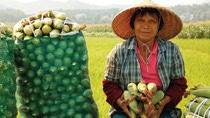
# 27
Social media has given farmers the perfect way to share the many joys, challenges and the daily realities of farming with people interested in how their food is produced.
A growing number of influencers have gained millions of followers who welcome their regular and honest posts and the insights the content gives into their lives.
Many say that they started sharing their stories to play a part in developing society’s interest in food production, land management and in appreciating the trade-offs that are a daily part of profitable and compliant agriculture.
In this episode of the Science Behind your Salad we are celebrating some of these farmers who came together to connect and inspire one another at an AgXplorers’ Influencer Camp in Germany.
Host Jane Craigie caught up with five of the 20 influencers at the event - Marie Hoffman, from Germany, Ally Hunter Blair who farms with his family in England’s Wye Valley, Tonis Soopalu, Estonia’s only farming influencer, Lasma Lapina from Latvia, and Austrian farmer, DJ and restaurateur, Johannes Burchhart, who describes farming as “like a heartbeat”.
Jane also spoke to Thomas Fischer who farms very sustainably at Quellendorf near Berlin, one of the farm’s ecologist partners, Christian Schmidt Egger and BASF’s Anna Lena Hottendorf.
Feeding the Future
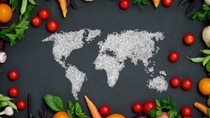
# 26
Feeding humanity in the future brings a complex set of interconnected challenges. What’s abundantly clear is that, over the coming decades, farming isn’t just about producing more, it’s about doing it differently, with the environment and society’s needs central to the task in hand.
In this episode of the Science Behind Your Salad, Jane Craigie explores feeding the future, evolving and adapting to climate change and its mitigation, and innovating, just as agriculture has done for centuries. What we consider as ‘the future’ centres around the year 2050 and feeding 1.5 billion more people with an estimated 50% more food and 70% more protein, this is a very stretching goal, yet farmers are ready to take on the challenge.
For Thomas and Jana Gäbert, their cooperative farm in Trebbin near Berlin in Germany, seems to encompass what the farm of the future should be – serving the community, running circular and self-sufficient approaches and with the aim to sourcing as much as possible locally including their energy, workforce and services.
As farmer Richard Hinchliffe, from Yorkshire in the UK accepts, the challenges are ever changing, but there is always a solution, as he describes in his battle against blackgrass, a common weed in cereal farming. His understanding of the weed’s behaviour, and how to break the cycle of seed return, has helped him control an increasingly difficult foe.
The Impact of Climate Change on Olives
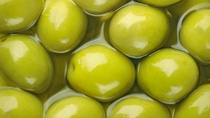
# 25
This episode of The Science Behind Your Salad from BASF visits Spain, Portugal and Egypt in a quest to discover how olive crops will be affected by climate change. Jane Craigie meets the farmers busily harvesting their crops, ready to take them off to the mill to be pressed into delicious golden olive oil.
The main focus of the olive growing industry encircles the Mediterranean. Olives favour warm conditions, but in some areas the climate is warming. Arid regions of Andalusia are becoming drier, and so farmers rely more and more on irrigation.
Jane meets farmers working hard to ensure their water goes a long way and they get the best from the scarce supply. She also meets farmers reinvigorating the olive industry in Egypt, with the help of modern farming methods and crop treatments, plus in Portugal she learns how the circularity of the farming operation, ensuring nothing is wasted, is becoming normal practice.
Meanwhile she talks to Johnny Madge, internationally known olive oil expert to find out what the future holds for a crop that faces challenges from a volatile climate.
Carbon Conscious Cooking for the Future
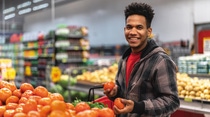
# 24
Our volatile climate will impact the way we cook and the way we eat. And so, farming needs to adapt, eating needs to adapt, and how we cook, will also need to adapt. In this episode of the Science Behind Your Salad, Jane Craigie explores the world of carbon farming: how can we grow better? How can we eat better? How can we feed ourselves with the climate in mind? For chef and best-selling author Alejandra Schrader, that’s simple! A little more thought and a little more planning can enable us to eat delicious, healthy food that has delivers all the required nutrients we need and reduces our impact on the planet. Andy Beadle is leading BASF's global carbon farming program who studies the way carbon can be locked up in the soil to maintain soil health, cut emissions and improve biodiversity; Robert Racz works on the Better Pork project that looks at ways to cut emissions in the pig industry, not just at source, but at all levels of the supply chain, with all links in the industry playing their part; Thierry Laval runs the FoodPilot initiative that relies on data to focus on the problem. Data is vital to crack the challenges farmers face and with everyone working together to move the industry in the right direction there is plenty of optimism that farming can play it’s role in providing us all the food we need to be able to cook delicious and healthy food for the future whilst also ensuring what we eat is sustainable.
Food Safety

# 23
Whether we’re buying a punnet of fruit, a freshly made burrito or a can of tomatoes, we take it for granted that the food is safe and free of any biological or chemical contamination. There are a host of food laws, regulatory bodies and food inspection schemes, as well as guidance on food preparation in our homes, to make sure that our food is safe. In this episode of the Science Behind your Salad, Jane meets Professor Louise Manning, a food system and safety researcher, Eric Kimunguyi, from AAK Grow in Kenya and Andrew Stirling, a potato farmer and processor from Angus in Scotland to understand the different aspects of food safety around the globe.
Sustainable Cereals
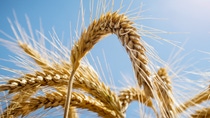
#22
There is a huge variety of grains, from quinoa to spelt, from bulgur wheat to pearl barley, from barley to rye. Barley used to feed livestock and used in whisky distilling are found right on Jane Craigie’s doorstep in Aberdeenshire.
In this episode of the Science Behind Your Salad, Jane meets the growers and distillers as they strive to produce the crop sustainably. She meets Graeme Cruikshank from the award winning Aberlour distillery, Nicola Wordie who has supplied the distillery with barley in the past, Andrew Booth who farms sustainably with a large Anaerobic Digester on his farm and we also hear from Horta, a subsidiary of BASF, striving to improve yields in a part of the world where barley for beer is vital.
Water Security

#21
The wettest country in the world is Columbia, which receives over 3200 ml of rain annually and the driest nation, Egypt, receives just 18 ml. Agriculture uses around 70% of the world’s freshwater, and irrigated farmland is crucial in delivering, on average, double the production of rainfed farming and 40% of the world’s total food production. Jane Craigie discovers how farmers, policymakers and land investors navigate water availability and rights, and how technology helps preserve every precious drop in times of shortage, while too much rain grinds everyday farming to a halt.
Coffee

#20
More than 3 billion cups of coffee are drunk every day but how did the bean inside a fruit become synonymous with kick starting our mornings with a caffeine hit to wake us up? Jane Craigie speaks to growers and traders who explore the history and culture of coffee and look to the future when the climate and growing conditions are looking likely to become more volatile. Jane discovers how coffee can be at the heart of social enterprises, empowering female workers and enabling communities to develop a social and economic infrastructure.
Weeds
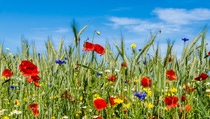
#19
Weeds are plants that are growing in the wrong place. Certain species can totally devastate farmers crops, resulting in huge losses of both productivity and income for the farmers. They can be the difference between survival and failure of a farm. But are they all bad? Tom Radford is a forager who spends his life travelling around in his van making social media content on plants that are largely unknown but have amazing folklore attached. He talks us through some of the tastier edible species. Sledge Taylor farms cotton in Mississippi in the US; Guy Smith is an arable farmer in the Southeast of England. Both are blighted by weeds that would, given the right conditions and without proper crop protection, put them out of business. Padma Commuri is one of the team of R&D at BASF whose job it is tom strive to predict what species are coming down the line and how they will interact with a changing climate. It’s a bit of crystal ball gazing coupled with some scientific knowledge that will keep farmers in production and billions of mouths fed in the coming decades.
Sustainable Agriculture
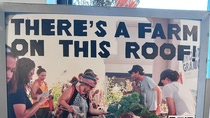
#18
Improving the sustainability of agriculture extends far beyond the production of food, as farmers share the global challenges of climate change mitigation, increasing space for nature and protecting resources. In this episode of The Science Behind your Salad, we explore the sustainability of food, land and food packaging, as well as the role that cities play in creating sustainable food systems and how farming contributes to the sustainability of cities themselves.
Fruit
#17

Sweet and juicy, plump and delicious: In this episode of The Science Behind Your Salad we’re telling the story behind the production and innovation of a delicious fruit salad. Apples, peaches and watermelons come under the spotlight in our whistle stop tour of the sweeter crops we love to eat.
Food Loss & Food Waste
#16

If food waste could be represented as its own country, it would be the third largest greenhouse gas emitter, behind China and the United States, according to the UN's environment program. Each year around 2.5 billion tons of food is lost or wasted each year, leaving roughly 3.1 billion people without sufficient nutritious food to eat. In terms of carbon footprint, the resources needed to produce this wasted food has a carbon footprint of about 3.3 billion tons of CO2.
In this episode of The Science Behind Your Salad, Jane Craigie explores ways that can help reduce the amount of food that is lost, both close to production - from farmers' fields, storage or transport, and food that is wasted from our homes - plus possible charitable and community outlets for excess food.
Jane also discovers some future crops that may also help reduce the amount of food wasted and help to feed those missing out on food: look out for water lentils and sea squirts whcih could be coming to a plate near you soon.
Vegetables
#15
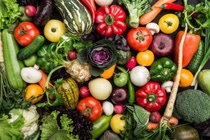
Vegetables are at the heart of a healthy diet. They are packed with vitamins and minerals and play an essential role in our physical and mental well-being. The global vegetable market is a multi-billion-dollar industry. For the past few decades, globalisation has enabled retailers to supply consumers with an abundant source of almost any variety of fruit and vegetables. Where once people relied on what could be grown in their locality at specific times of the year, now we don’t have to wait. But as the world changes and resources become scarcer, is there a role for increasing production of what’s able to be grown locally? Jane Craigie visits Mexico to witness a nation thriving as a result of its ability to export vast amounts of produce, and Bradley Magnus opens a window onto the future growing techniques that will keep us all fed with delicious vegetables for the coming decades.
Wine Grapes
#14
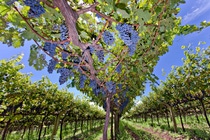
The first traces of wine production date back some 9000 years to parts of the Middle East. Georgia is known for making some of the earliest wines by burying Kvevris, giant earthenware pots, filling them with grapes and allowing the fruit to ferment. Over the millenia, the production of wine has evolved and the market is now worth over $200 billion. In this episode of the Science Behind Your Salad, Jane Craigie visits the Palatinate region of Germany, famous for its incredible Rieslings, and discovers the sensual way that moths are discouraged from destroying the grape crops.
Onions
#13
Loved by Ernest Hemingway in a sandwich, around 4.5 million tonnes of onions are grown globally each year. While Hemingway ate his onions raw, the vegetable is truly versatile and is the basis of sauces and stews, and can be a condiment on meats such as hotdogs and burgers and much, much more. Onions are a staple crop, traded globally. They can be easily stored and transported, but there is one trait that makes the onion stand out: when you chop it, they bring tears to your eyes. But not anymore: 30 years of crop breeding have led to the Sunions®. It’s an onion that is less pungent, sweeter and it doesn’t make you cry. We explore the development of this ground breaking new variety.
Cotton
#12
Not every crop relating to what we eat is edible. The table dressing also plays a valuable roll with crisp white tablecloths and beautifully folded napkins. In this episode we focus on the way that sustainability of cotton crops can be traced from the seed to the manufacture and selling of products made from the fabric - a success cotton story in Greece. In order to demonstrate the role blockchain technology can play in each step of the process, a unique fashion show has been staged in a cotton field in Komotini/Greece, and we were there to meet the farmers and scientists involved in the project. Meanwhile in the USA, a nation at the forefront of developing the industry and one of the world's top growers, we dip into the troubled past and the role slavery played in the success of cotton and explore new developments in seed breeding to ensure the crop can continue to be successful in the face of climate change.
Food Security
#11
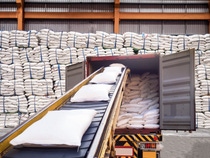
We are currently facing significant challenges to the world's food supply. A global pandemic, a war on the ground in the breadbasket of Europe, a volatile climate, plus a growing population, have all led us to a pinch point.
In this episode of The Science Behind Your Salad we examine the threats to our food supply and explore the possible solutions, innovations and approaches that could keep the ever-growing number of hungry mouths fed.
Canola
#10
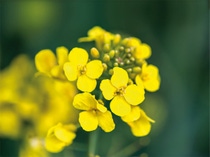
Waves of golden flowers can currently be seen rippling in the wind across many parts of the world as the oilseed rape (Brassica napus L.) harvest is approaching. But it is in Canada that the crop is a real success story. Oilseed rape grown there is a derivative known as canola. Canola oil is a highly versatile oil used for both animal and human consumption. The oil is low in saturated fats, so it is very healthy. In this episode we hear from farmers who produce rich golden oils and dressings from rapeseed and we hear about a real farming gamechanger for canola growers: InVigor canola seed. A hybrid canola seed that not only increases yield but also reduces something that is the bane of canola and rapeseed growers around the world: pod shatter. Pod shatter leads to millions of dollars of seeds being lost when the pods that contain the so-called ‘black gold’ – the seeds that are crushed to make the oil – are shattered by wind and rain before the farmers can get the crop in. With the pod shatter reduction technology, this can now be a problem consigned to the past.
Salad Leaves
#9

In this episode we discover the story behind the sweet, crisp, crunch of the salad leaves. From iceberg to Lollo Rosso, from radicchio to endive, the choice of salad ingredients is extensive. The flavours are equally varied from peppery to pea flavoured and plenty in between. We discover the story of the Frenchman who spent his days dressing the salads of London’s High Society in the 1800s and we explore the subterranean growing techniques that could revolutionise the way leaves are cultivated in the future.
Soybeans
#8

Every year 350 million tonnes of soybean are grown. More than three-quarters of global soy is fed to livestock for meat and dairy production. Most of the rest is used for biofuels, industry or vegetable oils. Whilst just 7% of soy is used directly as food for us to eat, the crop is packed with protein and is a valuable contributor to global health. This episode looks at breakthroughs in the production of the crop and we look at some of the foods that are made from soy from milk to tofu. It’s a vital crop that, if produced sustainably, could be a gamechanger when it comes to improving nutrition.
Holiday Bonus Episode (2021)
#7

In this surprise bonus episode, we’ll talk about the meaning of wheat from a seasonal perspective: Different Christmas food habits around the world, explained first-hand from BASF Agricultural Solutions employees. Thanks to all colleagues for joining the podcast to share about the meaning of wheat during holiday season. We wish you a refreshing holiday season and a happy and healthy new year. Subscribe to “The Science behind your Salad” wherever you get your podcasts so you don’t miss an episode - you'll hear from us again in 2022 with lots of more exciting stories.
Wheat (Part Two)
#6
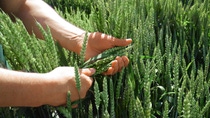
In the second episode exploring the importance of wheat as a crop globally, we discover the ways in which farmers can safeguard their crops against a host of challenges such as the weather and crop diseases.
The end result of all of the toil spent by the farmers around the globe working on their wheat crops? Fantastic tasting bread, pasta, cakes, biscuits and even beer.
Jane Craigie bakes her own bread and whilst doing so meets a super-hero in the world of wheat: Revysol!
Wheat (Part One)
#5

The story of wheat begins 10,000 years ago and becomes the tale of the biggest crop on the planet. Wheat covers more of the earth than any other crop and is a leading source of vegetable protein for all of us, wherever we are in the world.
From early origins in the ‘Fertile Crescent’ which is modern day Iran, Turkey and Afghanistan where three simple grasses came together to become one species, the crop has become synonymous with bread, pastries, pizzas, pasta, noodles, biscuits and cookies, pies, cereals and muffins etc. The list is virtually endless.
So how do scientists ensure that farmers can grow enough of the crop to feed an ever-growing population of hungry mouths, in the face of challenging climatic conditions? In this episode of The Science Behind Your Salad we explore the world of hybrid wheat: the breeding of a crop that will provide resilience for the coming decades.
Seeds
#4

Seeds are the powerhouse of the agricultural world. Often tiny, energy packed sources of fruit and vegetable crops, without seeds we wouldn’t be able to produce food for the planet’s hungry mouths.
But, as we’ll discover in this episode of The Science Behind Your Salad, we don’t just plant them, we can eat them too as nutritious snacks and as healthy salad toppers. But once in the ground, ready to germinate and fulfil their potential by growing into crops and then being harvested to be eaten, farmers do everything that they can to protect and nurture the seeds. Crop scientists are working constantly to find new ways to improve and protect seeds to give farmers the best chance they can to improve their yields. Join Jane Craigie as she delves into the world of seeds and as she munches a few too during the process.
Rice (Part Two)
#3
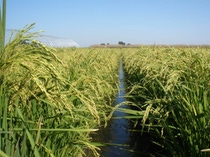
In the second episode devoted to one of the biggest crops on the planet: rice, Jane Craigie explores the way in which rice production in Australia is producing some of the world’s highest yields whilst using minimal amounts of water, and improving wildlife habitats. Across the globe Erik Andrus is in Vermont, USA where he practises Aigamo – the Japanese method of raising rice crops along side ducks. And Russell Reinke from IRRI explains the origins and development of Golden Rice that could deliver vital doses of vitamin A to those most at need. We explore the background to this controversial crop and look at how the story is everchanging.
Rice (Part One)
#2
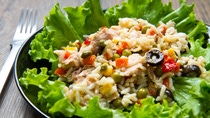
In this episode we discover that the method of paddy rice production is a huge contributor of greenhouse gases and so the tide is turning away from the paddy field system, towards something called Direct Seeded Rice. We also discover the way to cook perfect, plump and fluffy rice.
Tomatoes
#1

How did the humble tomato rise from its early beginnings as a small, hairy fruit to become one of the most celebrated and versatile crops on the planet? We trace the journey of the fruit from the mountain slopes of Mesoamerica to the giant of the salad bowl – and beyond – today. It’s a fruit that forms the base to many dishes all around the world: from ragus to curry dishes. So what does the future hold for the bright red, juicy tomato?